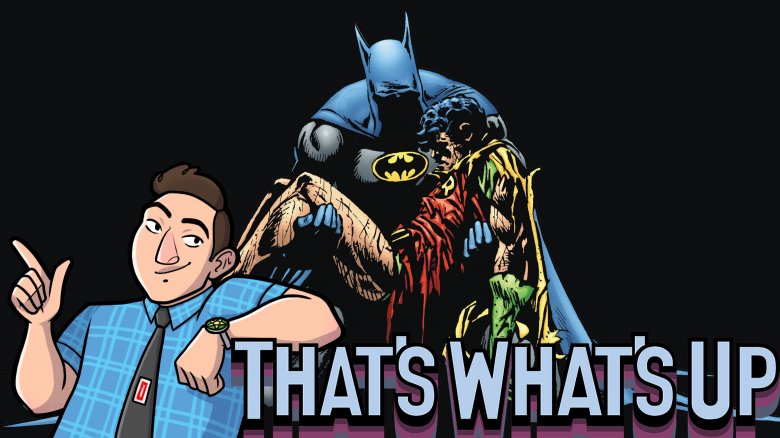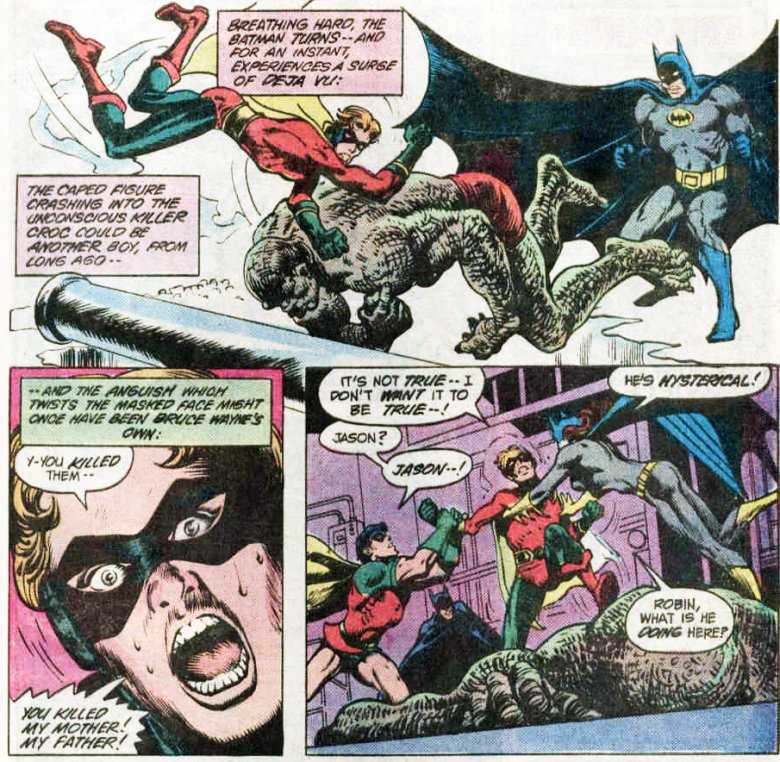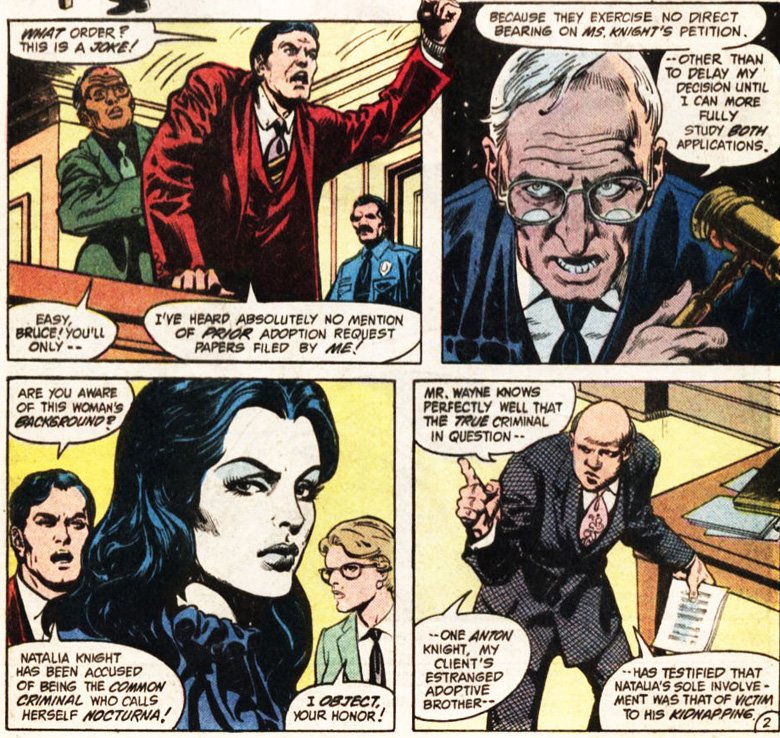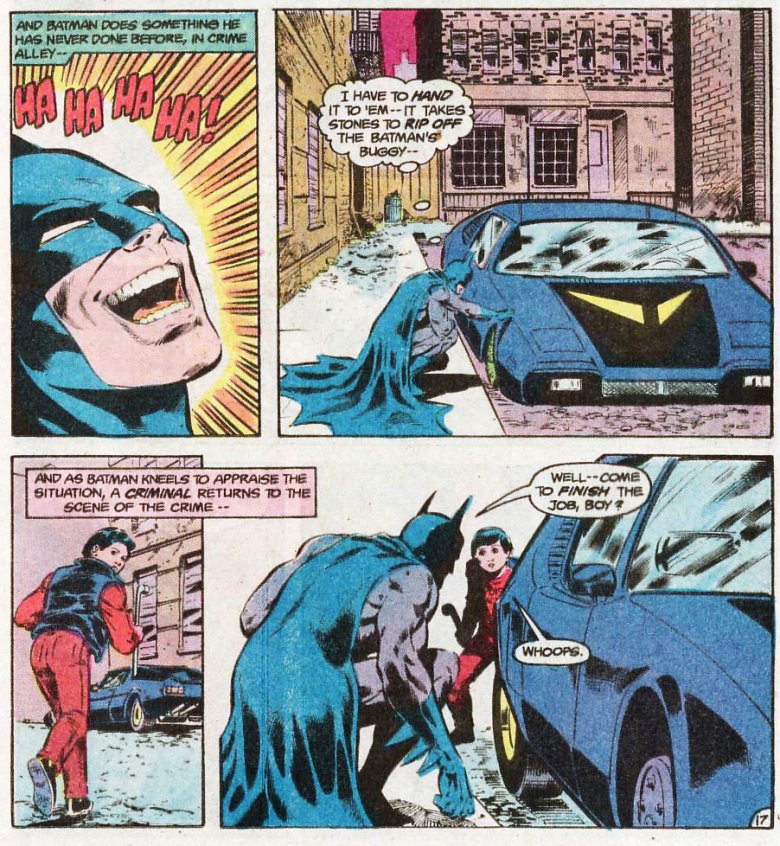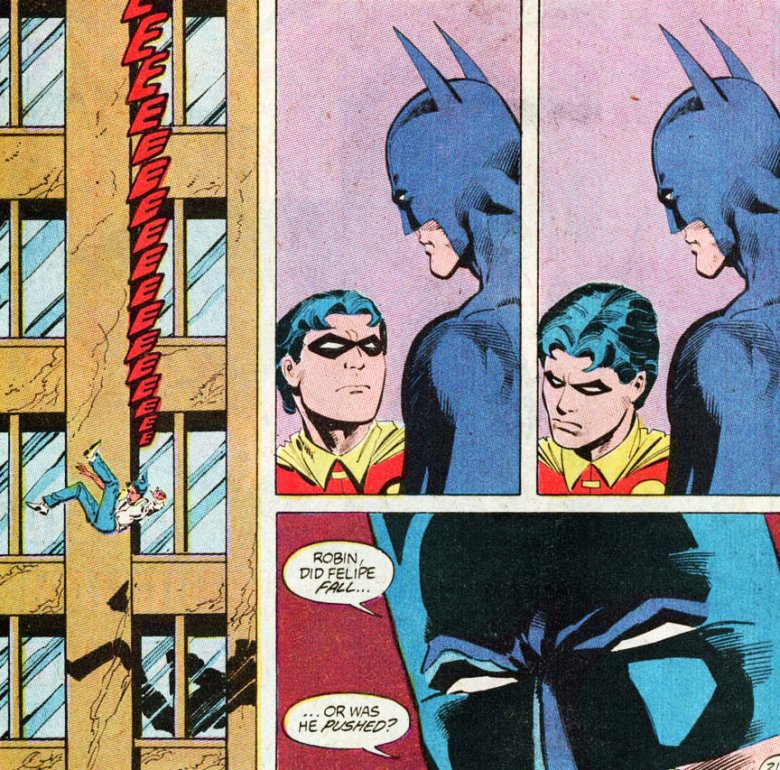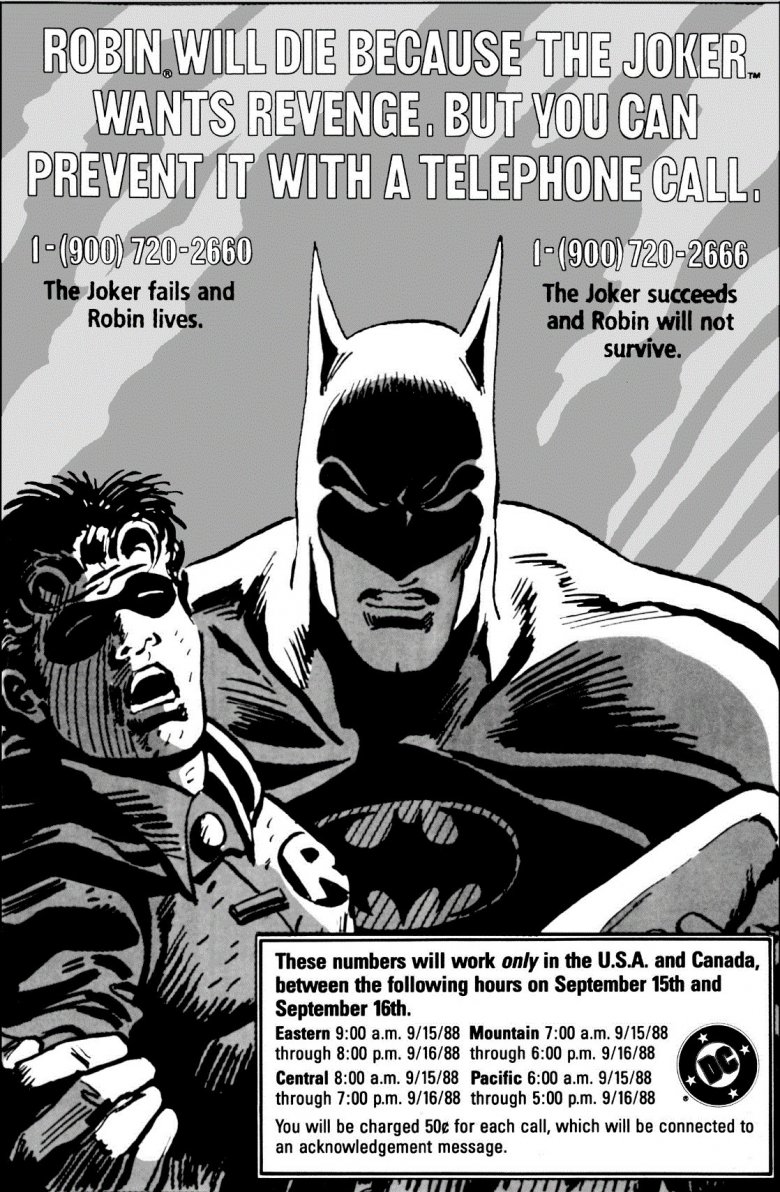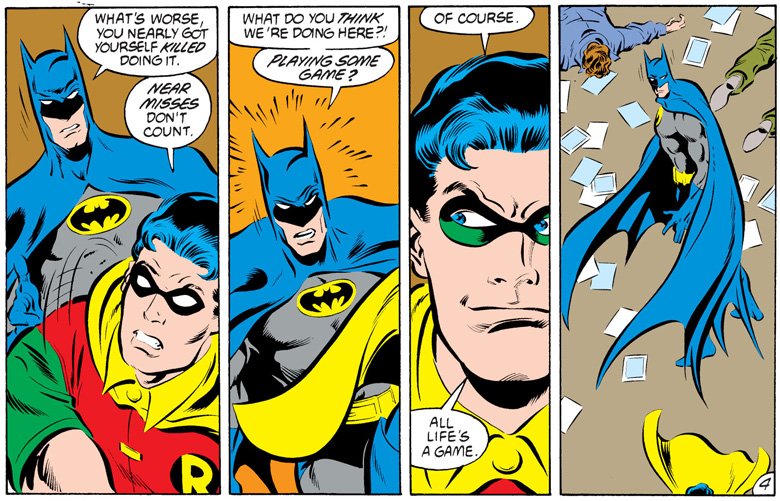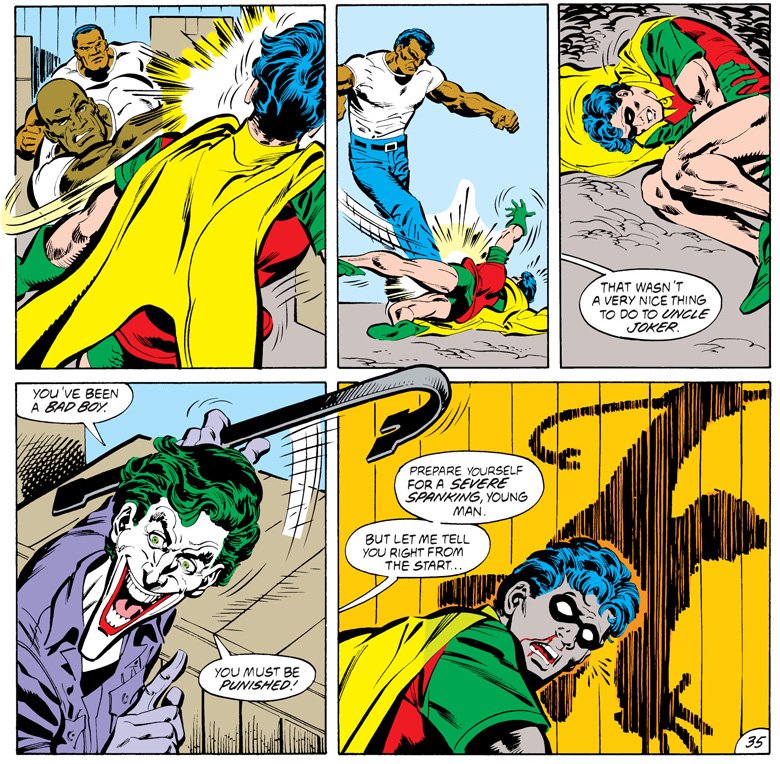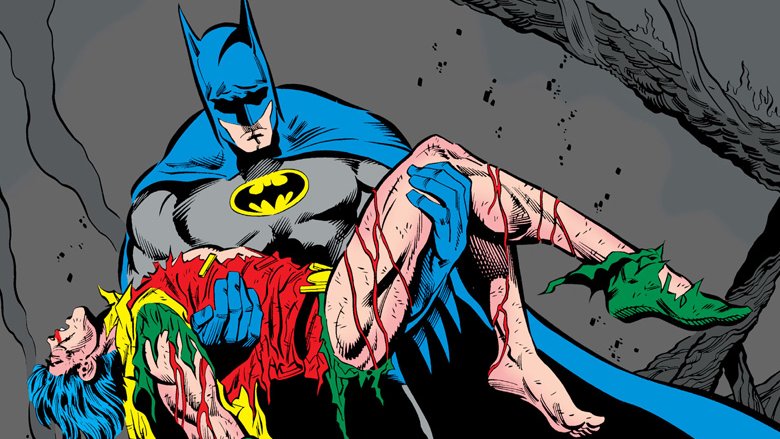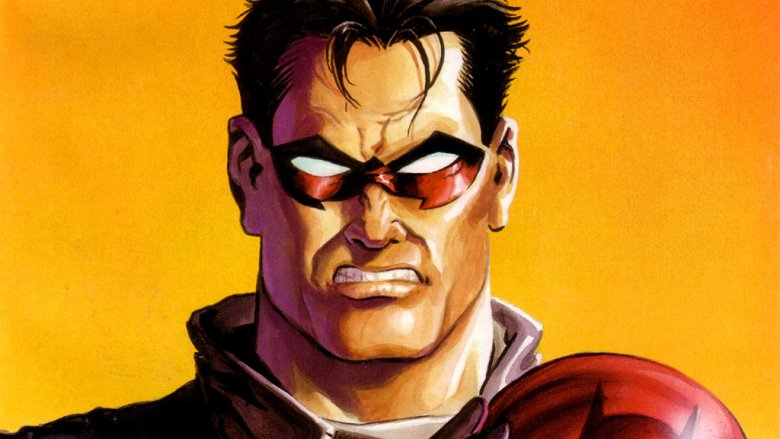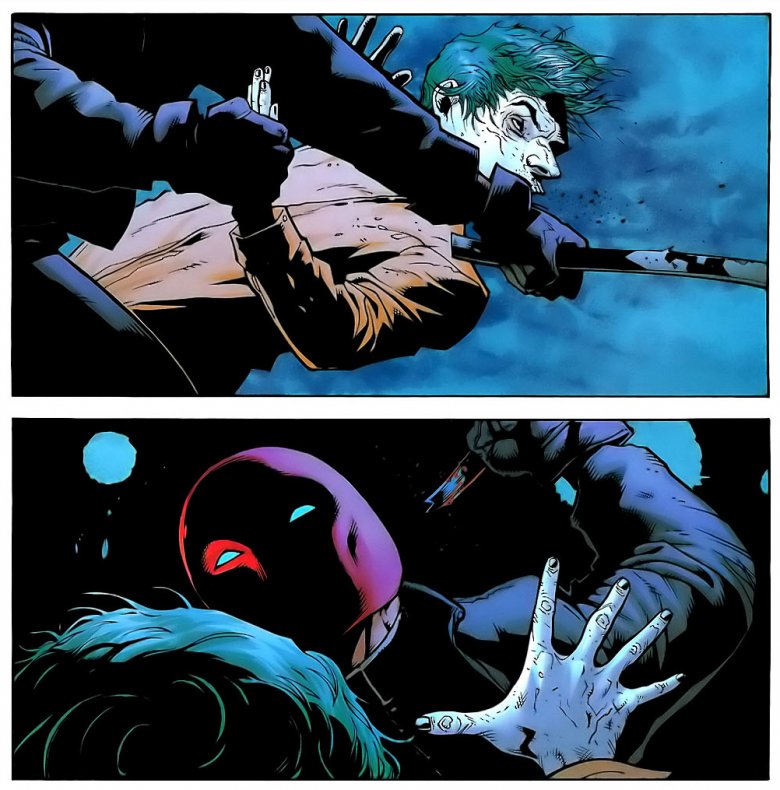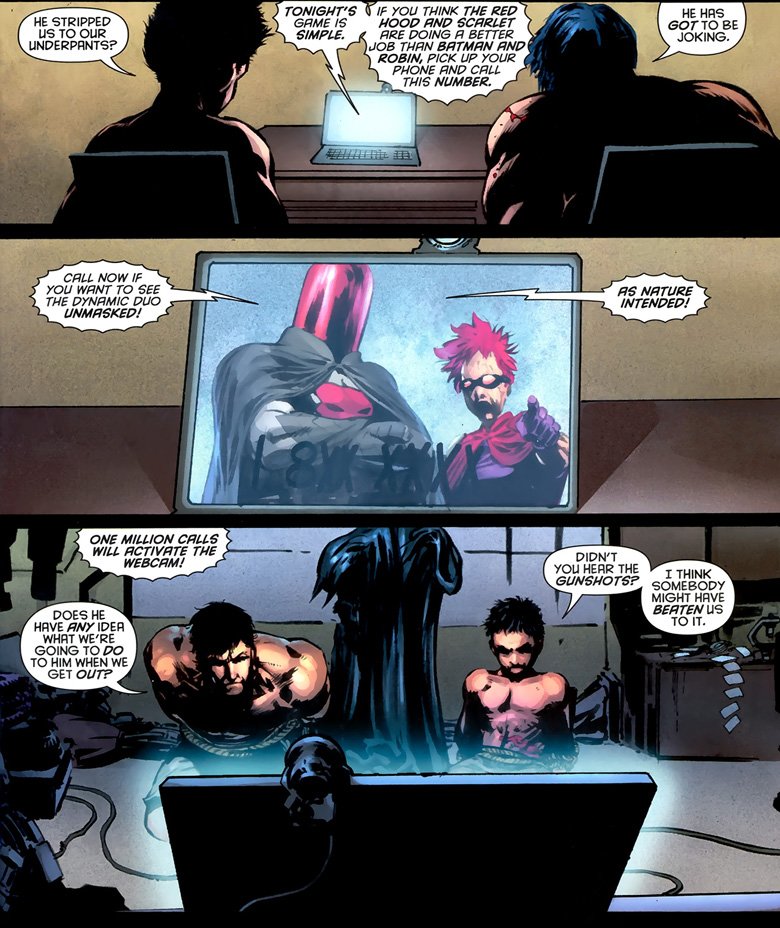That's What's Up: How Jason Todd Became One Of DC's Most Hated Characters
Each week, comic book writer Chris Sims answers the burning questions you have about the world of comics and pop culture: what's up with that? If you'd like to ask Chris a question, please send it to @theisb on Twitter with the hashtag #WhatsUpChris, or email it to staff@looper.com with the subject line "That's What's Up."
Q: What's the deal with Jason Todd being so hated that fans voted for his death? — via email
In the entire history of DC Comics, I don't think there's ever been a character as controversial as Jason Todd, the second Robin. Even Kyle Rayner, the Green Lantern of the '90s who had an organized group of of fans called H.E.A.T. that was advocating for the return of his predecessor for years, never got to the point where the company was actually letting fans decide whether he should be killed off. I mean, replacing a beloved character is always going to stir up some resentment, but spending 50 cents a vote to call for his death by crowbar beating? That's pretty extreme even for superhero comics.
As for how we got there, though, that one's easy. It was all a setup, my friends. Jason Todd never had a chance.
The strange debut of Jason Todd
One of the weirder that comes up when you talk about Jason Todd is that he's actually two characters, and one of them is almost completely forgotten. While most people remember Jason's debut as that time Batman caught him trying to steal the hubcaps off the Batmobile in 1986—which is an admittedly fantastic introduction for a new character—there was actually another version of Jason Todd that was introduced three years earlier. And despite the fact that he gave readers their first glimpse at a second Robin, he was also a lot more forgettable.
The problem is that the version of Jason that first showed up in Batman #357 was essentially just a carbon copy of the original Robin, Dick Grayson: a circus acrobat whose parents were murdered by a criminal. The only big difference was that rather than playing out in two and a half pages like Dick's origin had in 1940, Jason's took about a year. It wasn't a generic gangster who did the deed, either. It was Killer Croc, who managed to kill Joseph and Trina Todd off-panel between issues by feeding their bodies to crocodiles after Dick got them involved in an investigation.
Other than that, he was pretty much just Dick Grayson 2.0, with the notable difference of having red hair that he dyed as part of his Robin disguise. Oh, and also the part where his major storyline involved Bruce Wayne getting into a custody battle with a vampire.
Jason Todd: Version 1
Comics in the Bronze Age were weird.
Other than that, he was a standard issue Robin that allowed them to go back to using "Boy Wonder," letting Dick move on from being the "Teen Wonder"—they actually made a pretty big deal about this on the covers, although it's the kind of semantic difference that only really matters if you're really paying attention—and into the Nightwing identity that he's more or less had ever since. If you read Alan Moore and Dave Gibbons' classic "For the Man Who Has Everything," probably the second-most famous story that Jason appeared in, you could be forgiven for mistaking him for Dick Grayson. Without much in the way of solo stories, Jason was the cake that DC got to have while they ate Dick, too. Uh, you know what I mean.
But then, in 1986, DC decided to throw out the baby, the bathwater, and most of the bathroom with a yearlong event called Crisis on Infinite Earths that allowed them to restructure their universe. Superman, Batman, and Wonder Woman all got new origin stories, and while Batman's month-to-month adventures didn't really change that much after the events of Batman: Year One, Jason Todd was updated for the grim and gritty '80s. When he was reintroduced in Batman #408—remember that number—he was a streetwise orphan raised on Crime Alley, who was so fearless (and so unswervingly headed for a life of crime) that he first appeared trying to boost the tires off the Batmobile.
In this isolated case, crime actually pays pretty well
Batman, seeing himself in the kid's fearlessness and finding himself presented with an opportunity to channel it towards good ends and make a real difference, quickly took Jason in and started training him as the new Robin. And this time, he didn't even have to battle a vampire in court to do it. But while that new origin definitely distanced himself from his predecessor, it also changed how he was perceived by both creators and fans.
It's really interesting to look back at those issues and see how people were reacting to the new Robin. In Detective Comics, Mike W. Barr and Alan Davis—the creators of an underrated run that was heavily skewed towards providing decidedly modern stories that were structured like and influenced by Golden and Silver Age classics—basically just treated him as though he was Dick Grayson with a different name. They even ended "Fear for Sale," one of the greatest Batman stories of all time, with a reveal that Batman's greatest fear was that his plucky young ward would be murdered by one of his enemies, a fate that he narrowly managed to avoid... this time.
In the other monthly Batman title, however, creators like Max Alan Collins, Jim Starlin, and Jim Aparo were telling stories like the ridiculously violent "Ten Nights of the Beast" that were leaning harder and harder into grittiness. Starlin's take on Robin in particular was a much more vengeful product of the streets with violent impulses and a hard-line sense of right and wrong.
But while Jason was controversial, the reaction wasn't as divided as you might think. If you go back and read the letter columns in those issues, you'll find that while a few people were writing in to talk about whether they liked the new take on Jason, there weren't a lot of extreme takes. If nothing else, it definitely didn't have the vitriol or intensity of people writing in to debate whether or not Batman's logo should have a yellow oval. That conversation got heated.
But then came Batman #424.
The Diplomat's Son
This one was actually the first Batman comic I ever read—and the second half of the story, where Batman fights a bunch of dudes in a junkyard, is one of my all-time favorites—and it turned out to be a pretty pivotal issue.
The story concerns Felipe, the son of a South American diplomat who's heavily involved in the cocaine trade. This gives him that good ol' Lethal Weapon 2-style diplomatic immunity, which leads Batman — Batman, a man who dresses in a devil costume so that he can punch out criminals without concern for the law—to come to the conclusion that there's nothing he can do to really stop him. This doesn't sit well with Robin, especially since Felipe is also beating his girlfriend, and eventually drives her to commit suicide. Jason decides to confront Felipe himself, and when Felipe winds up falling from a skyscraper, Batman is left wondering if he slipped, or if Robin threw him to his death.
And they sold this comic to me when I was six.
It sparked a whole new rash of letters, which isn't surprising. At the time, Alan Moore and Brian Bolland's The Killing Joke had just been released to huge acclaim, and DC followed it up by announcing that they were going to do a story where the Joker was going to potentially kill Robin, with the outcome determined by the fans voting over the phone. And almost immediately, the letters started pouring in about whether Jason should die.
The fans respond
And immediately, the letters pages broke out into debate over whether it should happen. Some readers were ardent fans of the new direction, whether they were readers who had been around for a while and liked that the new Jason Todd was more distinct from Dick Grayson, or whether they just liked the fact that he was, as one letter-writer put it, "a vindictive, vengeful little brat." Others were afraid that having the Joker meant that Batman would have to kill him in return, and didn't want to lose their favorite villain. A few even wrote in to say that DC should kill him off and bring in Carrie Kelly, the Robin of The Dark Knight Returns, and a couple said they voted for Jason to die just to see if DC would actually do it.
And some just plain didn't like him. Here's the entire text of a letter from Batman #428: "Dear Denny, I heard some of what you are planning for "A Death In the Family" story line, including the phone-in number wrinkle, and I don't want to take any chances whatsoever. Kill him. Your pal, Rich Kreiner."
With pals like these, who needs enemies?
Should he stay or should he go?
The only thing everyone seemed to agree on was that Felipe definitely hadn't slipped, and that even if they didn't agree with it, Jason was pretty justified in giving him a shove off a balcony. That's a reading that continues to this day—writer and critic Katie Schenkel and I once had a conversation about how that story is one of the cornerstones for how she views Jason as an ardently feminist character, willing to take action even when Batman wouldn't.
That's a point that's rarely brought up about this story: Starlin and Aparo are so heavily invested in building Jason as an unhinged, rage-filled teen that their version of Batman winds up doing very little to prevent his death. There are a lot of grim looks and slow head-shaking in those stories, but beyond that, Batman doesn't really bother to do a lot. In "Diplomat's Son," he's satisfied with giving Felipe a criminal record that'll keep him from getting a job as a diplomat himself someday, and that's all he does. With Batman, who once founded an entire super-hero team because the JLA wouldn't let him create an international incident by attacking a foreign government, arbitrarily deciding that there's some red tape that he doesn't want to cut through, Jason's frustrations aren't difficult to sympathize with.
At the same time, it's easy to see that they were setting him up for a fall. He breaks Batman's code against killing and then lies about it, and with Starlin gearing up to write Death in the Family, it's hard not to look at that issue as a justification for why he'd have to die, or at least why his impulsive and violent nature would lead to some severe comeuppance. It's worth noting that he finds himself going up against the Joker alone because he consciously rejects Batman's help and walks right into a trap—and that even if the poll hadn't killed him, he still would've been beaten with the crowbar and blown up. The story would've played out the same way. The next two decades, though? Not so much.
Death in the Family
Either way, those stories made Jason a lot more controversial, and allowed a lot of readers to justify killing him off, if only because a teenage murderer wouldn't be a good fit for Batman's partner. If Barr and Davis' version was the more prominent one, where Jason was clever, resourceful, and a capital-letter Good Kid From Circumstances, the fan vote might've been dramatically different. But as Carl Yastremski and Tom Scharpling are fond of saying, "if ifs and buts were candy and nuts, we'd all have a hell of a Christmas."
The damage to the character had been done. The fans had spoken. After less than two years as Robin—21 issues, to be exact, Batman #408 to Batman #428—the fans voted for Jason to die by a margin of 72 calls, 5,271 to 5,343.
Needless to say, that provoked its own reaction. The fans were as equally divided in their reaction as they were in the poll, with some gloating, others being interested in seeing what would happen the next time Batman fought the Joker, and one reader writing in to sadly complain that readers these days were just so bloodthirsty. He wasn't wrong.
But the thing is, it was pretty unquestionably the right decision.
Aftermath
Regardless of how you feel about Jason Todd as a character, having the Joker kill him is a much better story.
It's not entirely positive, of course. The textual message of the story is that Batman can't save everyone, and while that helps to ground the story in "realism" in the way that a lot of readers wanted in the mid-'80s, the other half of that is that there are some people, like Jason, who are just beyond saving. Again, not entirely unrealistic, but it's a short walk from there to wondering why we should even bother having Batman to begin with. Plus, between this and Killing Joke, DC had taken its first steps down a path they'd be on for the next 20 years that ends with dudes like the Riddler and Crazy Quilt essentially being mass murderers.
At the same time, Batman is a character rooted in tragedy and loss, whose greatest victories often come from rebuilding his life after them. The Joker getting the victory here not only enhances his character by making him a deadly threat who isn't always defeated in the nick of time, and whose actions have lasting consequences, it also allows Batman to suffer a motivating loss at a time when new readers were coming in.
Ask anyone who likes Batman more than Superman why, and they'll often tell you that it's because Superman's invulnerability makes him boring. That's not true, of course—Batman wins his fights just as much as Superman, because they are protagonists in fictional stories — but I really do think a lot of it comes because the freshest, most pivotal Batman stories that you could read when that movie came out in 1989 and Batman was everywhere were the ones where he winds up taking the L.
Plus, it paved the way for the arrival of Tim Drake, the best Robin, and eventually Damian Wayne, the Robin who did "killer teenager" a whole lot better than J.T. ever did. All because Jason's death was a lasting consequence, a tragedy that had been woven into the fabric of the story.
Until, you know, it wasn't.
Return of the Red Hood
Nothing in comics ever stays dead forever, and while Jay had a better shot at it than most, he couldn't resist the siren call of a resurrection. The thing is, when he returned, it was as an adversary for Batman, not an ally.
Jason's return had been teased as a fake-out in Jeph Loeb and Jim Lee's Hush, and according to his introduction to the story, Judd Winick read that and started wondering why they couldn't bring him back. For my part, I said that if they ever did that I'd quit reading Batman comics forever, which might've been the biggest lie I've ever told.
Anyway, Winick and Doug Mahnke actually did the job in Batman #638, bringing Jason back as the Red Hood. And honestly? Despite my initial misgivings—and the in-story reason for his resurrection being that a Superboy from another dimension punched time so hard that it undid his death—it's a pretty good idea. Jason co-opting the Joker's original villainous identity for his own is a nice idea, and so's the fact that his first act upon returning is to beat the Joker senseless with a crowbar.
An old Klingon proverb...
Even though Batman wasn't great in the story—his reasoning for not killing the Joker himself is basically nonsense, and doesn't need to go any further than "Batman doesn't kill"—the idea here was very intriguing. Jason returned after years as the son that Batman thought he'd lost, taking on the hero who swore not to kill as the vigilante who never understood why not. It's a setup that's rife with drama, especially because it brings back to the one thing that was really lost from Batman when Jason was killed: his belief that Jason was worth saving.
Bringing Jason back, and eventually bringing him back into the Batman family as an on-again, off-again ally who didn't adhere to the rest of the fam's aversion to guns, fulfilled the promise of the character in a way that just keeping him around forever as the second Robin never would've. Everyone, honestly, came out a little better for it.
Of course, the debate still rages over whether what we got was better than what we lost by undoing his death. But there's one thing that kind of made it all worth it:
Call now!
That time Jason Todd put Dick Grayson in a deathtrap that would trigger if enough people called a telephone poll. How's that for turning things around?
Each week, comic book writer Chris Sims answers the burning questions you have about the world of comics and pop culture: what's up with that? If you'd like to ask Chris a question, please send it to @theisb on Twitter with the hashtag #WhatsUpChris, or email it to staff@looper.com with the subject line "That's What's Up."
